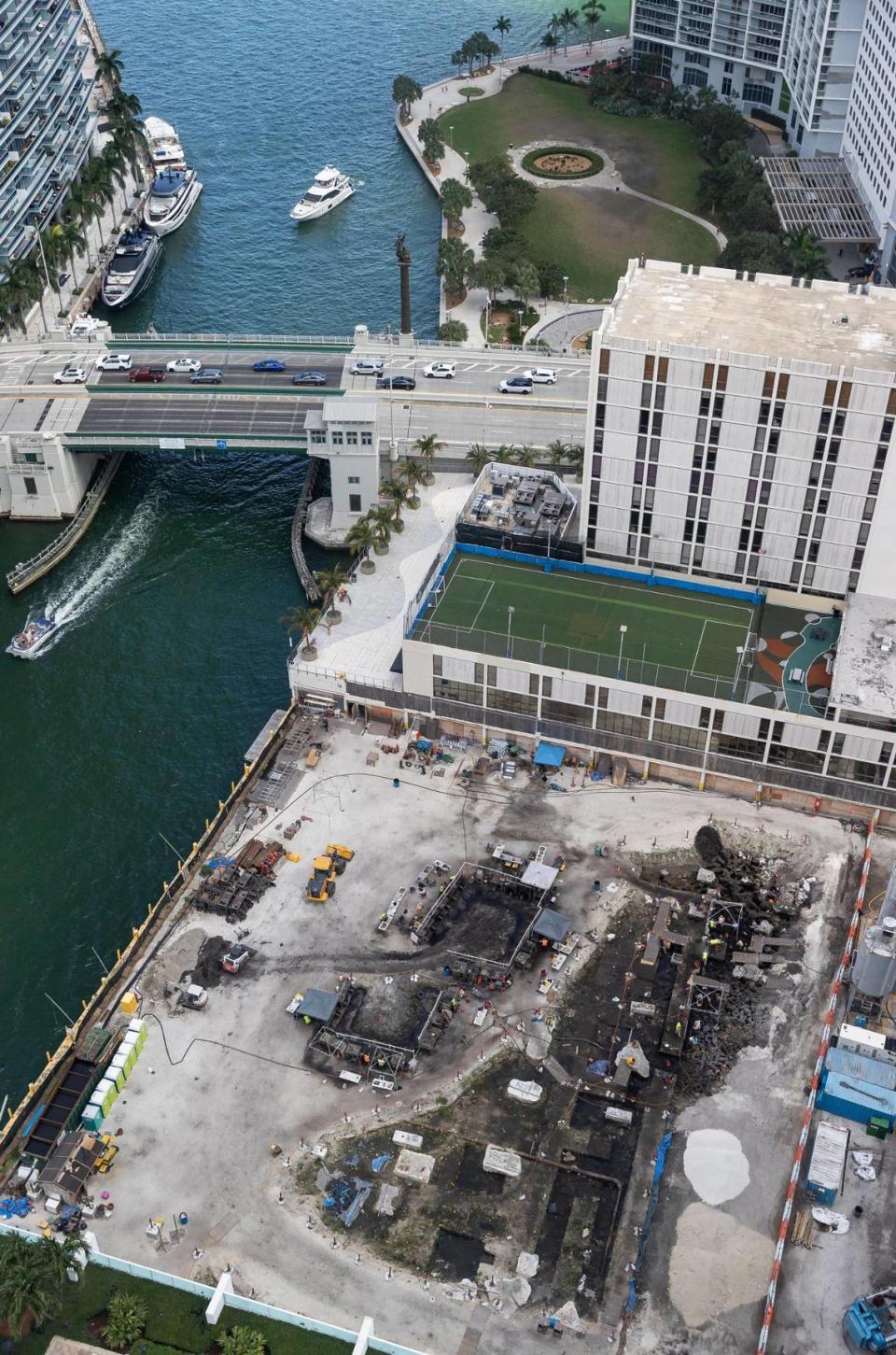Miami officials will consider saving 7,000-year-old Brickell archaeological site
In an unexpected move, Miami’s historic preservation board on Tuesday instructed city planning officials to begin studying whether they should grant legal protection to the Brickell site of a major prehistoric archaeological discovery where developer Related Group plans to erect three residential towers.
Though bureaucratic, Tuesday’s 8-0 vote by the board could prove consequential.
It’s the first step in potentially declaring the site, on the west side of the Brickell Bridge, a protected archaeological landmark. That designation would then give the board and the city power to require Related to preserve all or part of the site, to design its project to include public exhibition space for artifacts and other finds, or take other measures to protect or highlight its archaeological and historical importance.
An archaeological excavation, quietly under way for 16 months, has uncovered extensive evidence of a continuous indigenous settlement on the south bank of the Miami River stretching back as long as 7,000 years, far longer than previously thought, to a period that saw the emergence of human civilization around the planet.
The finds also indicate a Tequesta tribe settlement at the mouth of the River was larger than once thought, extending along both north and south banks to the site of the 2,000-year-old Miami Circle National Historic Landmark on Biscayne Bay.

Although the issue wasn’t on its agenda, the preservation board made its move after University of Miami archaeologists and the director of Dade Heritage Trust, a preservation group, showed up at its monthly meeting at Miami City Hall to urge board members to take action to ensure the site and its archaeological finds are not lost to history.
So far, neither Related nor city preservation officials have made any public statements to indicate whether they intend to preserve or exhibit any portion of the site or its rich archaeological discoveries, which range from Archaic stone spearheads and thousands of other artifacts to remnants of buildings, gravesites and animal remains. Human remains, also found on the site, must be relocated under the supervision of the Seminole Tribe of Florida.
Related and city officials have declined repeated requests from the Miami Herald for an interview over several weeks.
Recently, the city preservation office gave Related the green light to begin construction on a portion of the site where the excavation has been completed. That section, UM archaeologist and anthropology chair William Pestle told the board on Tuesday, has been covered with soil and probably lost forever.
Frustrated by the long public silence from the developer and city officials charged with overseeing the excavation, Pestle and other South Florida archaeologists and preservationists began pressing the city in recent weeks to do more amid increasing recognition of the site’s significance. That’s been publicly outlined primarily in reports filed with the city by Robert Carr, the veteran South Florida archaeologist who is conducting the dig at the Related construction site.
Last month, the scientists asked the board, also in an unscheduled appearance, to do more to publicize the finds and the site and ensure they will be accessible in some way for posterity. Though board Chairman William Hopper asked the question be included in Tuesday’s agenda, officials say that didn’t allow enough time for required legal public notification.
In the meantime, city preservation director Anna Pernas told the board on Tuesday, state archaeological officials in recent days visited the site with Related officials, who have agreed to make a public presentation at the board’s April meeting.
But board members did not want to wait until then to get the ball rolling on potential designation of the site, telling Pernas to immediately begin researching the matter in collaboration with Pestle and his UM colleague, archaeologist Traci Ardren.

Tuesday’s vote does not formally launch the designation process, which can take months, because the item wasn’t on the agenda and there was no public notice in advance of the meeting.
In April, the board could instruct Pernas to initiate a formal review for possible designation, an action that would automatically impose a hold on any construction on the site.
A lawyer for Related at Tuesday’s meeting, Carlos Diaz, said he did not object to the vote so long as a formal designation process is not yet started.
Preservation board member Bob Powers asked Pestle and Ardren to write a proposal for designation, submit it to the city preservation officer and work with her in preparing an in-depth evaluation that would be presented to the board for an eventual vote.
“This should be a World Heritage Site,” Powers said. “People should come from all over the world to see it.”
Related has said it plans three towers on the site — formerly occupied by U.S. Customs’ Miami headquarters and an adjacent parking garage — that include the ultra-luxury Baccarat Residences condominium and a rental tower. The 444 Brickell building housing the Capital Grille restaurant is part of the property and will eventually be torn town for the third tower.
Among the most abundant finds at the Related site are postholes cut into the bedrock to support buildings and boardwalks, as well as animal bones and shells, seeds and wood, pottery shards, and stone tools used to make wooden structures and canoes. Also found were animal bones, including perforated shark teeth that would be attached to wood to make knives, that were used for fishing and hunting, as well as shell ornaments.

